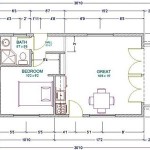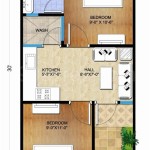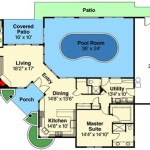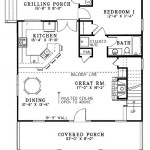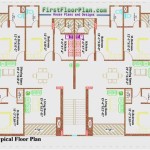```html
450 Sq Feet Home Plan: Maximizing Space and Functionality
The design of a 450 sq feet home plan presents a unique set of challenges and opportunities. The constraint of space demands meticulous planning and creative solutions to ensure comfortable living. Efficient use of every square inch becomes paramount, with a focus on multi-functional spaces, vertical storage, and clever design tricks to create an illusion of spaciousness. This article will explore key considerations and design strategies for optimizing a 450 sq feet home plan, covering aspects from layout and furniture selection to material choices and natural light integration.
Successfully designing a small living space hinges on prioritizing needs and understanding personal lifestyle. Before any architectural drawings are drafted, a thorough assessment of daily activities and requirements is crucial. Does the resident work from home? Is frequent entertaining a priority? What are the storage needs for clothing, books, and other personal belongings? Answering these questions will inform the design process and ensure that the final plan caters precisely to the occupant's needs.
Consideration should also be given to the orientation of the building and the prevailing climate. Maximizing natural light and ventilation can significantly improve the livability of a small space, reducing the need for artificial lighting and air conditioning. Strategic placement of windows and doors, along with the use of light-reflecting materials, can contribute to a brighter and more welcoming environment.
Key Considerations for Layout and Zoning
The layout of a 450 sq feet home requires careful zoning to delineate different functional areas. The objective is to create distinct spaces for living, sleeping, cooking, and bathing without making the home feel cramped or cluttered. Open-plan designs are often favored in small spaces as they promote a sense of flow and connectivity. However, it is important to define zones visually through the use of furniture placement, changes in flooring material, or subtle level changes.
The kitchen often integrates with the living area in a small home plan. Space-saving appliances, such as a compact refrigerator, a two-burner cooktop, and a combined microwave and oven, are essential. Vertical storage solutions, such as tall cabinets and open shelving, can maximize storage capacity without occupying valuable floor space. A small breakfast bar or dining table can serve as both a food preparation surface and a dining area.
The sleeping area can be incorporated into the living space using a variety of strategies. A Murphy bed, which folds up into the wall when not in use, is a popular option for maximizing space. Alternatively, a loft bed can create a sleeping area above the living space, freeing up floor space below for a desk or seating area. If a separate bedroom is desired, it can be partitioned off using a sliding door or a partial wall.
The bathroom, although small, should be designed for functionality and comfort. A compact toilet, a wall-mounted sink, and a shower stall are space-saving options. Light-colored tiles and a large mirror can create an illusion of spaciousness.
Optimizing Furniture and Storage Solutions
Furniture selection plays a critical role in the success of a small home plan. Multi-functional furniture is highly desirable, as it can serve multiple purposes and minimize clutter. For example, a sofa bed can provide seating during the day and a sleeping surface at night. A coffee table with built-in storage can be used to store blankets, books, and other items. Ottomans with hinged lids can provide additional seating and storage space.
Vertical storage is essential in a small home. Tall bookshelves, cabinets, and shelving units can maximize storage capacity without occupying valuable floor space. Wall-mounted shelves are a great way to display decorative items and store books or other belongings. Hooks and hangers can be used to store clothing, bags, and other items on walls and doors.
Consider the scale of furniture when choosing pieces for a small space. Oversized furniture can overwhelm a room and make it feel cramped. Opt for smaller, more streamlined pieces that are proportionate to the room's dimensions. Clear acrylic or glass furniture can also help to create an illusion of spaciousness, as it visually disappears into the background.
Hidden storage is another valuable strategy for maximizing space. Consider incorporating storage under beds, benches, and stairs. Built-in cabinets and drawers can be customized to fit specific needs and maximize every inch of available space.
Materials, Lighting, and Creating a Sense of Spaciousness
The choice of materials and finishes can significantly impact the perceived size and atmosphere of a small space. Light colors and reflective surfaces can help to brighten a room and create an illusion of spaciousness. White, cream, and pale gray are popular choices for walls and ceilings. Mirrors can also be used strategically to reflect light and visually expand the room.
Flooring should be durable, easy to clean, and complementary to the overall design scheme. Light-colored wood floors or large-format tiles can create a sense of continuity and make the space feel larger. Area rugs can be used to define zones and add warmth and texture to the room.
Lighting is crucial for creating a comfortable and inviting atmosphere in a small home. Maximize natural light by keeping windows unobstructed and using sheer curtains or blinds. Supplement natural light with a combination of ambient, task, and accent lighting. Recessed lighting, track lighting, and wall sconces are space-saving options that can provide ample illumination without taking up valuable floor space. LED lighting is energy-efficient and offers a wide range of color temperatures to suit different needs.
Consider incorporating natural elements into the design to create a sense of calm and tranquility. Plants can add life and greenery to a small space, improving air quality and creating a connection to the outdoors. Choose plants that are well-suited to indoor environments and require minimal maintenance.
Finally, minimize clutter and keep the space organized. A cluttered space will always feel smaller than it actually is. Regularly declutter and get rid of items that are no longer needed. Use storage containers to organize belongings and keep surfaces clear. A minimalist approach to design can help to create a sense of calm and order in a small home.
```
450 Square Feet Double Floor Duplex Home Plan

450 Square Feet Double Floor Duplex Home Plan

16 X 28 Ground Floor Plan Under 450 Sq Ft House Model In

450 Square Feet House Design Plan 01

450 Square Feet Double Floor Duplex Home Plan Acha Homes

New House Plan 450 Sq Ft 4 5x9meter Best Ghar Ka Design Small

Pin Page

450 Sq Ft 1 Bhk Floor Plan Image Shri Prabhakar Construction Co Sheetal Town Apartment Available For Rs In 8 51 Lacs Proptiger Com

Country Style House Plan 1 Beds Baths 450 Sq Ft 116 229 Houseplans Com

450 Sq Ft 3bhk Two Y House At 1 25 Cent Land Free Plan Cost 8 Lacks Home S



